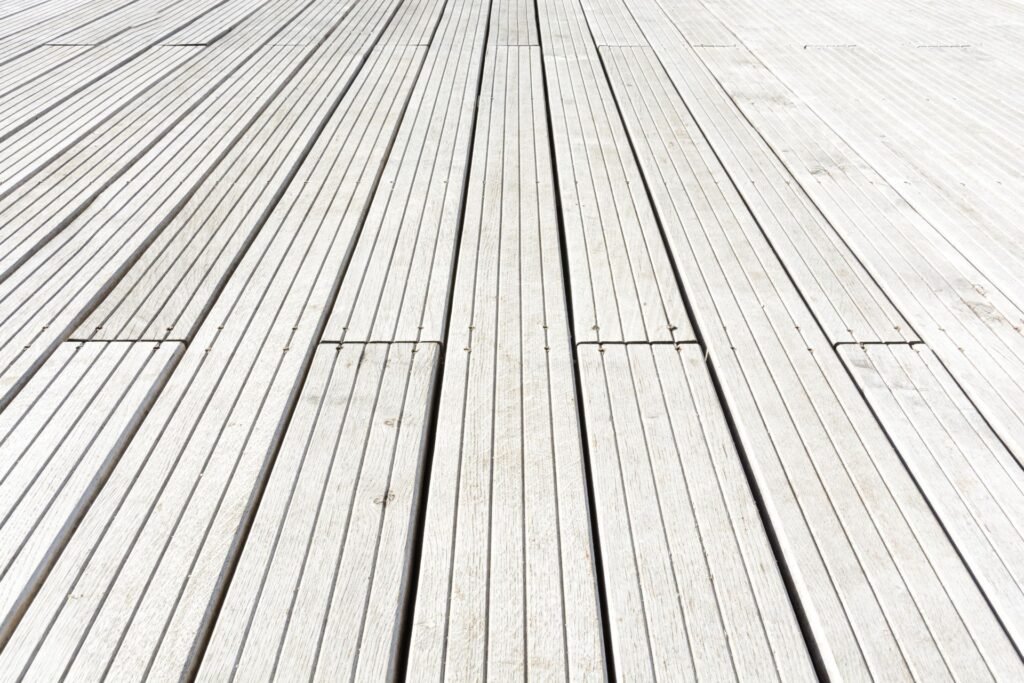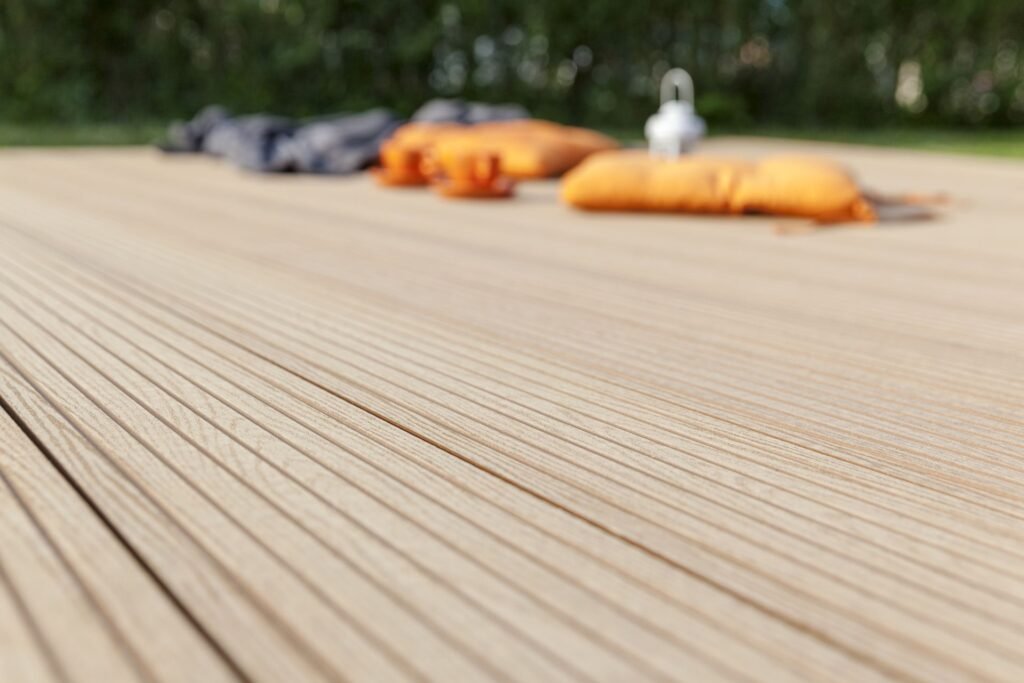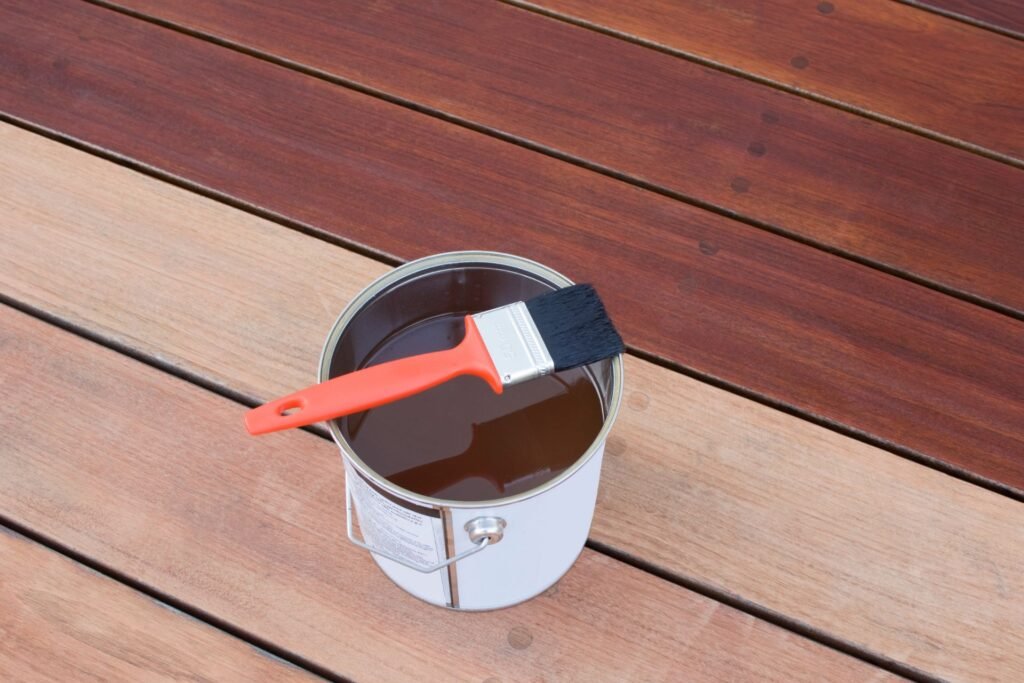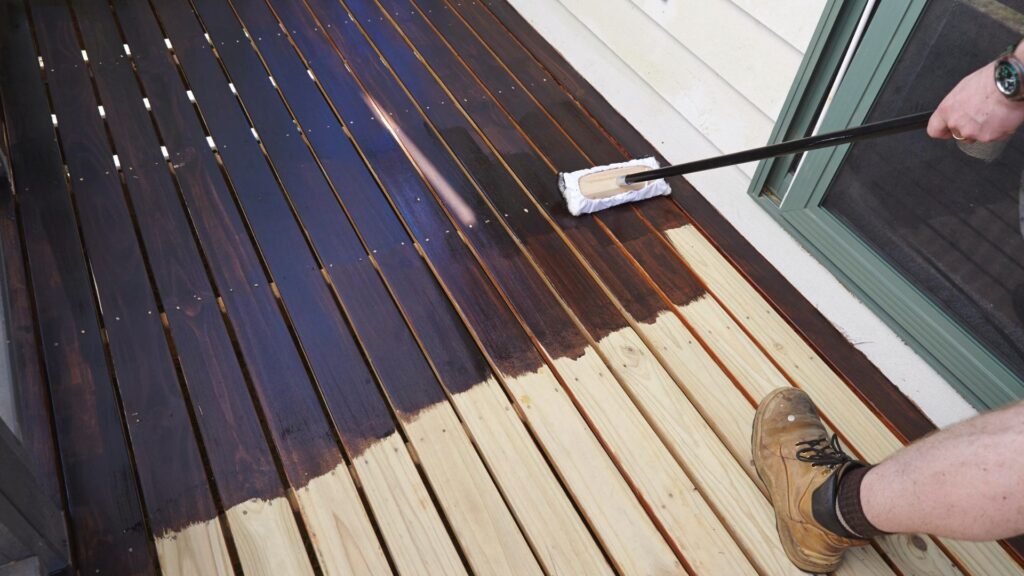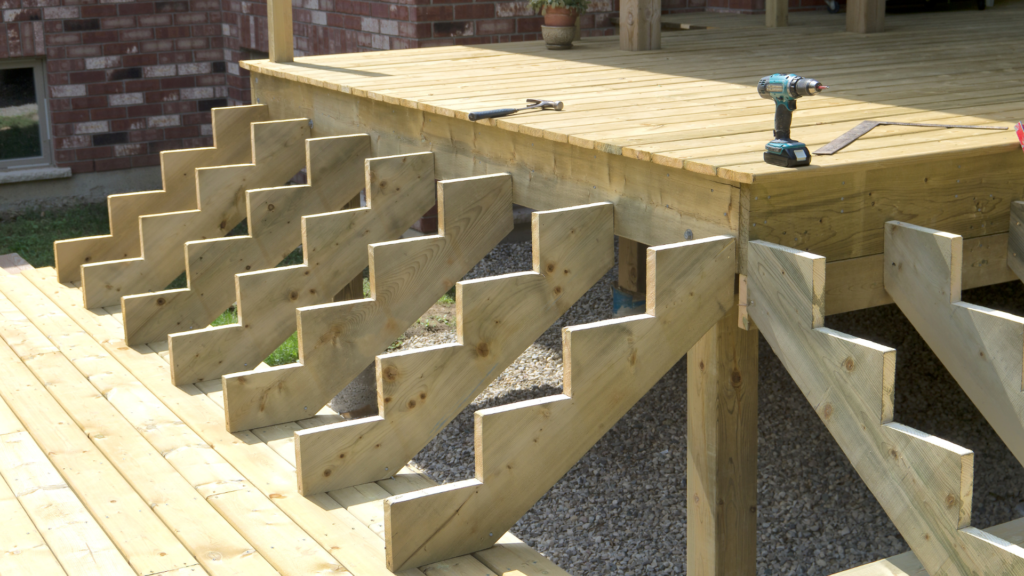Ultimate Guide To Best Composite Decking Australia
Welcome to our comprehensive guide on selecting the best composite decking in Australia. As more homeowners seek durable and low-maintenance options for their outdoor spaces, composite decking has surged in popularity across the country. Known for its robustness and minimal upkeep, composite decking is not only a practical choice but also an eco-friendly one, thanks to its use of recycled materials. In this post, we’ll explore everything you need to know about composite decking from its benefits and installation tips to a review of the top brands available on the market. Whether you’re renovating your home or planning a new build, understanding the nuances of composite decking will help you make an informed decision that suits your needs and aesthetic preferences.
If you’re looking to upgrade your outdoor space, composite decking is an excellent choice in Australia, known for its durability and low maintenance. Unlike traditional wood, composite decking resists fading, staining, and weathering, making it ideal for the harsh Australian climate. It also offers a variety of styles and colors to match any home aesthetic. With benefits like eco-friendliness from the use of recycled materials and the added advantage of no need for yearly staining or sealing, composite decking provides a cost-effective, attractive, and long-lasting solution for any decking project.
What Is Composite Decking?
Composite decking is a modern and increasingly popular alternative to traditional wood decking, crafted from a blend of wood fibers and plastics. This innovative combination of materials not only enhances the durability of the deck boards but also contributes to their aesthetic appeal and functionality.
Composition and Manufacturing
Composite decking is made by combining wood fibers often recycled wood scraps with recycled plastics. These materials are then heated and molded into board shapes that resemble traditional wood planks. The wood fibers provide the natural look and feel of wood, while the plastic components contribute to the board’s strength and moisture resistance.
Benefits of Composite Decking
The advantages of composite decking over traditional wood are significant, making it a preferable choice for many homeowners and builders. Here are some key benefits:
Durability and Maintenance: Unlike traditional wood, composite decking is resistant to warping, splitting, and cracking. It withstands weather elements much better, which contributes to its long lifespan. Additionally, it does not require the regular staining, sealing, or sanding that wood needs, making it much easier to maintain.
Lifespan: Composite decking often comes with extended warranties, some lasting as long as 25 to 30 years. This longevity is significantly greater than that of many wood products, which may need substantial maintenance or replacement within 10 to 15 years.
Aesthetic Flexibility: Available in a variety of colors and finishes, composite decking offers aesthetic flexibility that can match a wide range of architectural styles. It maintains its color and appearance for years without the fading typical of some wood products.
Eco-Friendliness
One of the most compelling features of composite decking is its environmental benefit. The decking is made from a high percentage of recycled materials. For instance, the wood fibers can come from reclaimed wood scraps, and the plastic components from recycled plastic bottles and bags. This not only helps reduce the amount of waste in landfills but also decreases the demand for virgin wood, thus preserving forests. Composite decking itself is also recyclable at the end of its life, further contributing to its eco-friendly credentials.
Composite decking represents a sustainable, durable, and aesthetically versatile choice for modern decking needs. Its combination of recycled materials and reduced maintenance needs make it an attractive option for those looking to enhance outdoor spaces while minimizing environmental impact. Whether you are building a new deck or replacing an old one, composite decking offers a compelling array of benefits over traditional materials.

Why Choose Composite Decking For Your Australian Home
When it comes to selecting the right decking material for your home, the choice often boils down to balancing aesthetics, durability, and maintenance. For homeowners in Australia, composite decking emerges as a compelling option due to its numerous benefits tailored to the unique Australian climate and lifestyle. Here’s why composite decking could be the perfect addition to your outdoor living space.
Climatic Suitability of Composite Decking for Australian Weather
Australia’s weather conditions can be quite harsh, with intense sun, heavy rain, and in some areas, extreme humidity. Traditional wood decking, while beautiful, often struggles to withstand these conditions without frequent maintenance. Composite decking, made from a blend of wood fibers and plastic, is designed to endure the Australian climate more effectively.
The material composition of composite decking means it is resistant to warping, fading, and cracking common issues with pure wood in fluctuating temperatures and high UV exposure. Moreover, it does not splinter or rot, making it a more durable option for the sun-drenched and often humid Australian outdoors. Its ability to withstand moisture also makes it ideal for coastal homes where salt air and high humidity can degrade traditional materials quickly.
Long-Term Cost-Effectiveness Despite Higher Upfront Cost
Indeed, composite decking often comes with a higher initial cost compared to traditional wood decking. However, the long-term savings are significant. Composite decks require minimal upkeep beyond regular cleaning; there’s no need for annual sanding, staining, or sealing. This low maintenance requirement not only saves substantial amounts of money over time but also spares homeowners the usual labor and hassle associated with maintaining a wood deck.
The durability of composite materials means they can last decades without the signs of wear and tear that wood decks often exhibit after just a few years. This longevity makes composite decking a wise investment, as the replacement and repair costs are considerably lower over the deck’s lifespan.
Highlighting Safety Features Like Slip Resistance
Safety is a paramount concern for homeowners, especially in environments where decks will be frequently used by children and the elderly. Composite decking is designed with safety in mind. Many brands offer slip-resistant surfaces that provide better grip underfoot than traditional wood, especially when wet. This feature is particularly beneficial during rainy months or around pool areas where slips and falls are more common.
In addition to slip resistance, composite decking does not splinter, reducing the risk of injury from walking barefoot on the deck. This makes it a safer choice for a family-oriented outdoor space, where comfort and safety are key.
In conclusion, choosing composite decking for your Australian home not only meets the demands of the local climate but also offers enhanced safety features, and despite its higher upfront cost, proves to be cost-effective in the long run. Its durability, low maintenance requirements, and aesthetic appeal make it an excellent choice for any homeowner looking to enhance their outdoor living space while minimizing future upkeep and repair costs.
When considering a new deck, weigh these factors carefully. The initial investment in composite decking might be higher, but the long-term benefits and savings provide a compelling argument for this modern decking solution tailored to Australian homes.

Top Factors To Consider When Choosing Composite Decking
When it comes to upgrading your outdoor space, choosing the right composite decking is crucial for both aesthetics and functionality. Composite decking offers a blend of beauty, durability, and low maintenance, making it a popular choice among homeowners. Below, we delve into the key factors you should consider to ensure you select the best composite decking for your home.
Aesthetics: Color, Texture, and Finish Options
The visual appeal of your decking is often the first thing that catches the eye. Composite decking comes in a wide range of colors, textures, and finishes, which can mimic the look of natural wood without its downsides. When selecting decking:
Color: Choose a color that complements the exterior of your home and fits with your garden’s design. Lighter colors are great for sunny areas as they reflect more heat, while darker hues suit shaded spaces.
Texture: Textures can range from smooth to grainy, mimicking various types of wood. A proper texture not only adds to the visual appeal but also affects the slip resistance of the decking.
Finish: Matte, satin, and glossy finishes are available. Consider a finish that matches your style and the practicality of outdoor use. For instance, matte finishes are less slippery when wet.
Performance: Durability, Fade, and Stain Resistance
Performance is a crucial factor in choosing composite decking. You want a deck that not only looks good but also lasts long and withstands various weather conditions.
Durability: Composite decking is designed to resist rot, mold, and termites, which are common issues with traditional wood decks.
Fade Resistance: Exposure to the sun can cause some decking materials to fade. Look for high-quality composite materials that are treated to resist UV rays.
Stain Resistance: Opt for decking that doesn’t easily stain from spills or pet accidents, which is particularly important if you entertain outdoors often.
Maintenance Requirements: Cleaning and Care Practices
One of the significant advantages of composite decking is its ease of maintenance compared to wood decking.
Cleaning: Generally, composite decking only requires occasional washing with soap and water to remove dirt and debris.
Care Practices: Unlike wood, composite doesn’t need sanding, staining, or sealing, making it easier to maintain over time and reducing long-term maintenance costs.
Warranty and Support from Suppliers
Finally, consider the warranty and customer support offered by the supplier. A good warranty can protect your investment and provide peace of mind.
Warranty: Look for warranties that cover issues like fading, staining, and structural damages. Warranties can range from 10 to 25 years, depending on the quality of the composite decking.
Supplier Support: Reliable customer support can help you resolve any issues or concerns quickly. Choose suppliers known for their customer service and responsiveness.
In conclusion, selecting the right composite decking involves considering aesthetics, performance, maintenance, and supplier support. By evaluating these factors, you can choose a decking solution that is beautiful, durable, and easy to maintain, enhancing your home’s outdoor space for years to come.
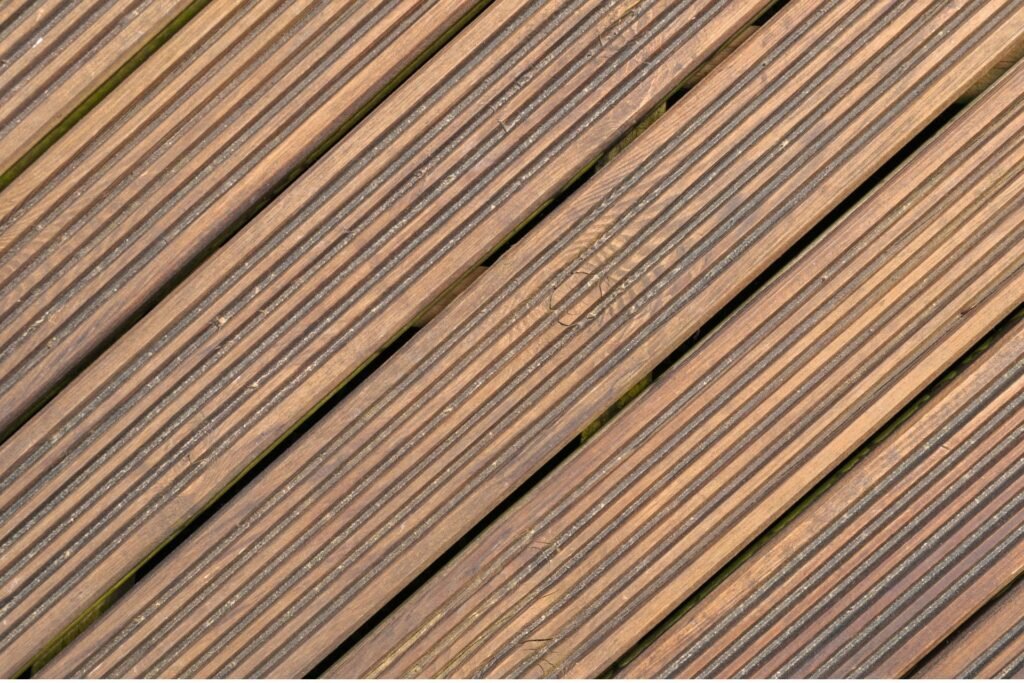
Installation Tips For Composite Decking
When considering upgrading your outdoor living space, composite decking offers a durable and aesthetic option. While the allure of doing it yourself can be strong, understanding the process, recognizing when to call in professionals, and being aware of typical installation errors can make a significant difference in the outcome. Here’s a detailed breakdown to help you achieve the best results.
Step-by-Step DIY Installation Guide for Composite Decking
Planning and Preparation
Measure Your Space: Accurate measurements are crucial to ensure you purchase the right amount of materials. Include a bit extra for potential mistakes or adjustments.
Choose Your Material: Research various composite decking brands and types to find the best fit for your climate and aesthetic preferences.
Acquire the Right Tools: You’ll need basic tools like a circular saw, drill, and level. Also, consider renting specialized tools like a power auger for digging post holes.
Building the Frame
Laying the Foundation: Start by setting up the ledger board against your house and ensuring it’s securely attached.
Construct the Joists: Install the joists at 16-inch intervals to provide a stable base for the decking boards.
Check for Level: Before proceeding, ensure everything is perfectly level to avoid future issues.
Laying the Decking
Spacing: Leave appropriate gaps between boards for expansion and drainage, usually about 1/8 inch.
Securing the Boards: Use hidden fasteners or specific composite decking screws to avoid visible screws on the deck surface.
Finishing Edges: Use matching trim boards or a picture frame layout to cover the outer joists and provide a polished look.
Final Touches
Seal and Protect: Even though composite materials are low maintenance, sealing the ends of cut boards can enhance longevity.
Clean Up: Remove any excess materials and clean the deck surface to enjoy your new outdoor space.
The Importance of Professional Installation for Optimal Results
While DIY installation of composite decking is feasible, hiring professionals can offer significant advantages:
Expertise and Experience: Professional installers bring years of experience, ensuring that the deck is installed quickly and correctly.
Warranty Protection: Many composite decking warranties require professional installation to remain valid, protecting your investment.
Customization and Complexity: Professionals can handle complex designs and customizations that might be challenging for a DIY approach.
Common Installation Mistakes to Avoid
To ensure the longevity and aesthetics of your composite deck, steer clear of these common installation errors:
Poor Spacing: Inadequate spacing between boards can lead to water pooling and increased expansion, which might warp or damage the decking.
Incorrect Fasteners: Using the wrong screws or fasteners can lead to issues like board uplift or visible rusting. Always use the manufacturer-recommended fasteners.
Overlooking Local Codes: Compliance with local building codes is essential; failure to do so can result in fines or necessary redesigns.
By following these detailed steps and considering when to opt for professional help, your composite decking installation will not only look great but also stand the test of time. Remember, the key to a successful decking project lies in careful planning, precise execution, and ongoing maintenance.

Maintenance And Care For Composite Decking
Maintaining a composite deck involves specific strategies to ensure it remains beautiful and durable over the years. In this guide, we’ll explore routine cleaning tips, methods to handle damage and repairs, and longevity tips to maximize the lifespan of your decking. By adhering to these practices, you can keep your composite decking looking as good as new.
Routine Cleaning Tips for Composite Decking
Regular cleaning is crucial for maintaining the appearance and extending the life of composite decking. Unlike traditional wood decking, composite materials resist rot and decay but can still accumulate dirt and grime.
Regular Sweeping: Use a soft bristle brush to sweep leaves, dirt, and debris off your deck. This prevents the buildup of materials that can lead to staining and moisture retention.
Washing: For general cleaning, a hose equipped with a spray nozzle is usually sufficient to remove dirt. For more stubborn spots, a mild soap solution can be applied with a soft brush. Rinse thoroughly after cleaning to avoid leaving any soapy residue.
Recommended Cleaning Products: Opt for cleaners specifically designed for composite decking. Avoid using harsh chemicals like bleach, which can discolor and damage the surface. Several eco-friendly products on the market are effective and safe for composite materials.
Annual Deep Clean: Plan a more thorough clean once a year. This involves not only washing the surface but also checking for any mold or mildew, especially in damp or shaded areas. Products formulated for composite decks that address these issues are advisable.
Handling Damage and Repairs
Composite decking is designed for durability, but it can still suffer from scratches, stains, and other minor damages.
Scratches and Scuffs: Minor scratches can often be blended into the surrounding area with a wire brush or sanding. Always follow the grain of the wood and consult the manufacturer’s guidelines to ensure compatibility with your decking material.
Stain Removal: Spills should be cleaned immediately to prevent staining. For oils, grease, or wine stains, use a composite deck stain remover or a degreaser that is suitable for synthetic decking.
Replacing Boards: In the event of severe damage, such as deep scratches or cracked boards, replacing the affected planks may be necessary. Composite decking boards are usually easy to remove and replace, ensuring your deck remains in optimal condition.
Longevity Tips to Maximize the Lifespan of Your Decking
Maximizing the lifespan of your composite decking involves regular maintenance and a few key practices:
Proper Installation: Ensure your decking is properly installed with adequate drainage and spacing to prevent water accumulation, which can lead to mold and structural issues.
UV Protection: Although composite decks are more resistant to sun damage than wood, using a UV-resistant sealant can help prevent fading and maintain the deck’s color and finish.
Furniture Pads: Use protective pads under outdoor furniture to prevent scratches and dents on your decking.
Routine Inspections: Regularly check your deck for any signs of trouble, such as loose boards or railings, and address these issues promptly to prevent further damage.
By following these tips, your composite decking can remain a durable and attractive feature of your home for many years. Regular maintenance not only enhances the beauty of your deck but also contributes to its longevity, ensuring that it continues to be a place of relaxation and enjoyment for you and your family.

Cost Analysis Of Composite Decking In Australia
When considering an upgrade or installation of a new deck, homeowners and builders in Australia often weigh the merits of composite decking against other materials. This section provides an in-depth analysis of the costs associated with composite decking in Australia, comparing these costs to other popular decking materials and exploring available financing options.
Initial vs. Long-term Costs of Composite Decking
Initial Costs: Composite decking is renowned for its durability and aesthetic appeal, but it typically comes with a higher initial investment compared to traditional wood decking. The upfront cost includes not only the price of the materials but also installation fees, which can vary depending on the complexity of the design and the contractor’s rates. On average, the material costs for composite decking can range from $100 to $350 per square meter, depending on the quality and finishes selected.
Long-term Costs: The true value of composite decking becomes apparent in the long run. Unlike wood, composite materials require minimal maintenance, with no need for annual sanding, staining, or sealing. This significant reduction in upkeep can save homeowners thousands of dollars over the deck’s lifespan. Additionally, composite decks are more resistant to the harsh Australian climate, pests, and decay, further reducing the likelihood of costly repairs or replacements.
Comparison with Other Decking Materials
When compared to traditional wood decking, initial costs for composite materials are higher. However, wood decks typically require annual maintenance that can add up to $2,000 over 10 years, not including any necessary repairs from weather damage or decay. In contrast, alternatives like aluminum or concrete decking present different cost structures. Aluminum decking is highly durable and low maintenance but can cost upwards of $200-$300 per square meter. Concrete is often cheaper but offers a different aesthetic that may not suit those looking for a traditional deck appearance.
Financing Options and Payment Plans
Understanding the financial commitment of installing a composite deck, many Australian suppliers and contractors offer financing options or payment plans. These can range from interest-free periods to structured payment plans, allowing homeowners to spread the cost over time. It’s advisable to shop around and discuss payment terms with multiple suppliers and finance companies to secure the best deal that aligns with your financial situation.
By considering these financial aspects, homeowners can make an informed decision on whether composite decking is a suitable investment for their outdoor space. The initial cost may be higher, but the durability, ease of maintenance, and aesthetic appeal often justify the investment, making composite decking a wise choice for many Australian homes.
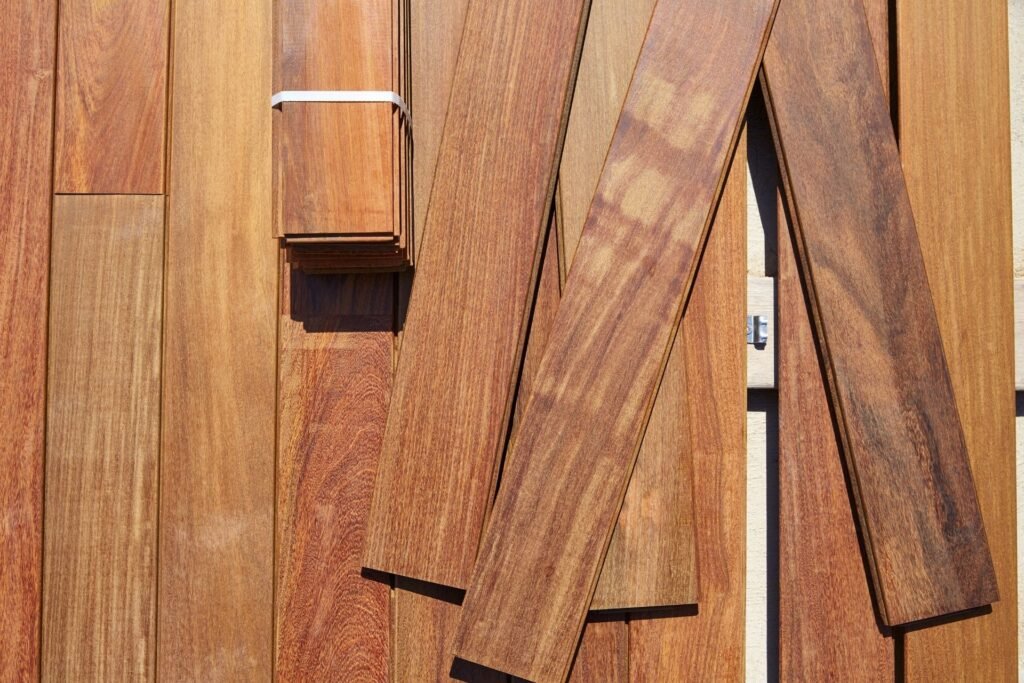
Case Studies: Successful Composite Decking Projects In Australia
Composite decking has become a popular choice among Australian homeowners due to its durability, minimal maintenance requirements, and aesthetic appeal. This material offers the beauty of wood without the high maintenance, making it ideal for the Australian climate which can range from extreme heat to heavy rainfall. In this article, we explore several case studies of successful composite decking projects across Australia, detailing the application, homeowner feedback, and the visual transformation involved.
Case Study 1: The Modern Family Home in Melbourne
Application
In the bustling suburbs of Melbourne, a family chose to renovate their outdoor living space with composite decking to accommodate their love for outdoor entertainment. The decking was used to create a seamless flow from the indoor living area to the outdoor patio and pool area, featuring a sleek, grey composite material that complements the modern aesthetic of their home.
Owner’s Feedback
The homeowners were thrilled with the outcome, noting that the composite decking not only enhanced the look of their home but also proved to be highly resilient against weather changes. They particularly appreciated how the decking material remained cool underfoot, even during the hot summer months, and required little to no maintenance compared to traditional wood decking.
Visual Appeal
The visual transformation was significant, with the decking providing a clean, minimalist look that matched the home’s contemporary design. The grey tones of the decking contrasted beautifully with the vibrant greens of the garden, creating a visually appealing outdoor space perfect for relaxation and entertainment.
Case Study 2: Coastal Retreat in Sydney
Application
A coastal property in Sydney utilized composite decking to maximize its beachfront location. The decking was installed around a pool and extended to a sun deck, using a sand-colored composite material to harmonize with the sandy beach directly adjacent to the property.
Owner’s Feedback
The owners expressed satisfaction with their choice, highlighting the deck’s resistance to saltwater and humidity as a major benefit. They also mentioned the safety aspect, as the composite material is slip-resistant and does not splinter, making it safer for barefoot traffic, which is common in a beach setting.
Visual Appeal
The decking added a warm, inviting layer to the home’s exterior, enhancing its beachy feel. The color choice was perfect for blending the indoors with the outdoors, providing a smooth transition that visually extended the living space into the natural beach environment.
Case Study 3: Elegant Outback Villa in Perth
Application
In the scenic outskirts of Perth, an elegant villa incorporated composite decking to enhance its outdoor dining area and surrounding walkways. The chosen material had a rich, deep brown hue that beautifully mirrored the natural bushland surrounding the property.
Owner’s Feedback
The villa owners were impressed by the durability and ease of maintenance of the composite decking. They noted that the deck stood up well against the harsh sun and frequent dry spells, maintaining its color and integrity without fading or warping.
Visual Appeal
The rich brown decking enriched the rustic charm of the villa, creating a stunning contrast with the lush greenery and the natural stone elements of the building. This addition not only increased the home’s aesthetic value but also its practical usability, providing a perfect setting for outdoor gatherings.
In conclusion, composite decking in Australia offers a range of benefits from aesthetic enhancements to practical functionalities like durability and safety. Each of these case studies demonstrates how well composite decking can integrate into different settings, fulfilling the unique needs and preferences of homeowners while boosting the visual and functional value of their properties.

Future Trends In Composite Decking
The evolution of composite decking continues to shape outdoor living spaces across the globe, and Australia, with its unique climate and lifestyle, stands as a key player in this dynamic market. In this article, we will explore the latest innovations in composite decking materials, emphasizing technology and sustainability, and we will delve into the predictions for the Australian market in the coming years.
Innovations in Composite Decking Materials
Composite decking has come a long way since its inception. Initially valued for its durability and low maintenance compared to traditional wood, today’s composite decking products are also at the forefront of technological and environmental innovations. Here are some key advancements:
Enhanced Durability and Performance: Modern composite decking materials are engineered to be more resistant to the elements be it the harsh sun, heavy rain, or fluctuating temperatures. Manufacturers have developed composites that resist fading, staining, and scratching, significantly extending the life and aesthetics of decks.
Sustainability Initiatives: As sustainability becomes a crucial factor in building materials, composite decking is leading with eco-friendly solutions. Many new composites are made from recycled plastic and wood fibers, reducing waste and the use of virgin materials. Companies are also investing in cleaner production processes to minimize environmental impact.
Aesthetic Improvements: There’s a growing trend towards composites that mimic the natural look and feel of various wood species with astonishing accuracy. Advances in color mixing and texturing have allowed manufacturers to offer a wide range of finishes, catering to diverse aesthetic preferences.
Smart Decking Technologies: The integration of technology into composite decking is a relatively new but rapidly growing trend. Innovations such as built-in lighting, heating elements for colder climates, and even smart sensors that monitor the health and stability of the deck are becoming more prevalent.
Predictions for the Composite Decking Market in Australia
The Australian market for composite decking is poised for significant growth, driven by several factors:
Increasing Awareness of Composite Benefits: As homeowners and commercial developers become more aware of the long-term benefits and cost efficiencies of composite decking, its adoption is expected to rise. The demand for low-maintenance, high-performance materials in Australia’s often harsh weather conditions makes composites a preferred choice.
Urbanization and Renovation Trends: With the urban sprawl and the rising trend of renovating existing properties, there is an increased demand for decking solutions that offer both functionality and aesthetic appeal. Composite decking fits well into this space with its versatility and variety of design options.
Regulatory Influence: Government policies focusing on sustainable building materials could further boost the adoption of eco-friendly composites. As regulations become stricter regarding environmental sustainability, composite decking is likely to become a more prominent player.
Technological Adaptation: As Australians become more tech-savvy, the appeal of advanced composite decking features, like moisture sensors or UV protection technologies, is expected to grow, especially in premium market segments.
Looking forward, the composite decking industry in Australia shows robust potential, marked by technological innovation and a shift towards more sustainable building practices. For consumers and builders alike, the future of decking promises enhanced durability, beauty, and environmental responsibility, making it a compelling choice for both new constructions and renovations.
In conclusion, whether you are a homeowner planning to revamp your outdoor space or a contractor focusing on sustainable building solutions, staying informed about the latest trends in composite decking will ensure that you are well-prepared to make educated decisions that align with future advancements and market demands.
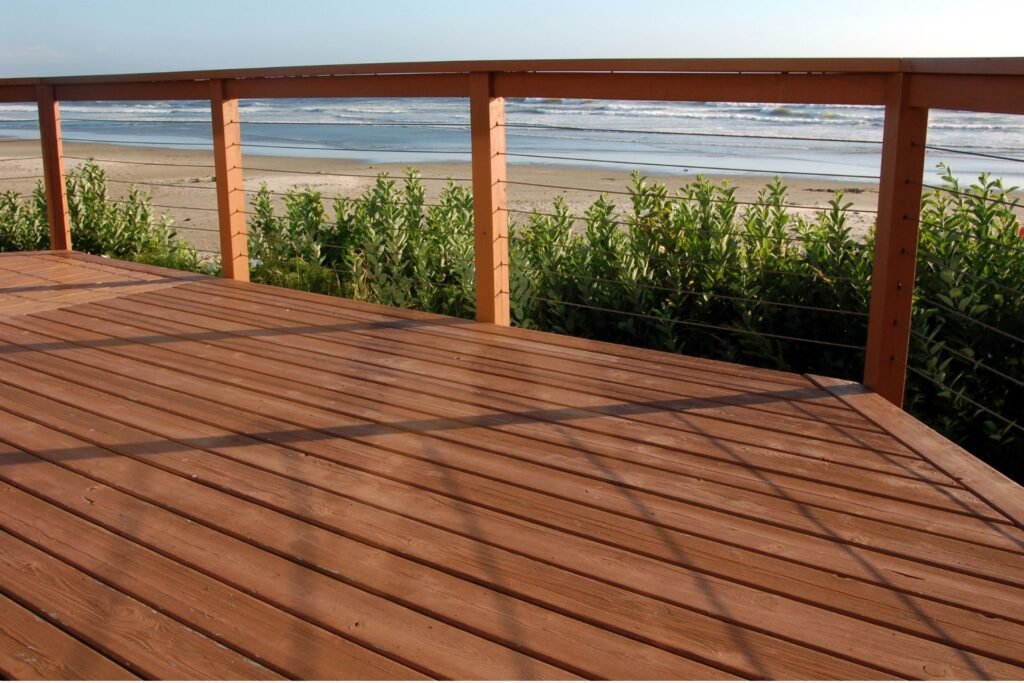
FAQs about The Best Composite Decking Australia
Conclusion
Composite decking offers a myriad of benefits that make it an ideal choice for Australian homeowners, combining durability with low maintenance to withstand the country’s harsh weather conditions. As a modern, eco-friendly option made from recycled materials, it aligns well with those conscious of their environmental impact and lifestyle needs. If you’re considering upgrading your outdoor space, we encourage you to contact local suppliers or visit showrooms to explore the variety and versatility of composite decking firsthand. By seeing the materials up close, you can better understand how this sustainable, robust option can enhance your home and simplify your life.
About the Author:
Mike Veail is a recognized digital marketing expert with over 6 years of experience in helping tradespeople and small businesses thrive online. A former quantity surveyor, Mike combines deep industry knowledge with hands-on expertise in SEO and Google Ads. His marketing strategies are tailored to the specific needs of the trades sector, helping businesses increase visibility and generate more leads through proven, ethical methods.
Mike has successfully partnered with numerous companies, establishing a track record of delivering measurable results. His work has been featured across various platforms that showcase his expertise in lead generation and online marketing for the trades sector.
Learn more about Mike's experience and services at https://theleadguy.online or follow him on social media:

